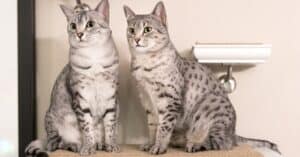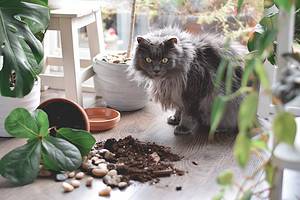The Turkish Van and the Turkish Angora are both cat breeds that are often confused with one another. At first glance, it’s pretty easy to see why these two would be mixed up with each other. After all, they’re both beautiful cats with white coats that both have the word Turkish in their name. However, these cats actually do have a lot of differences that are worth discussing — especially if you’re looking to own one. Are you interested in learning about these differences? In this article, we will look at the Turkish Van vs Turkish Angora to see what makes these two breeds unique.
Whether you’re interested in owning a new cat or are simply looking to learn more about different breeds, we’ve got you covered!
Comparing a Turkish Van and a Turkish Angora
| Turkish Van | Turkish Angora | |
|---|---|---|
| Size | Reaches a height between 10-14 inches and weighs between 10-20 pounds | Reaches a height of 9-14 inches and weighs 8-15 pounds |
| Lifespan | 12-17 years | 9-14 years |
| Coat Length | Semi-long | Medium |
| Temperament | Playful, affectionate, lots of energy | Sweet, gentle, highly-intelligent |
History of the Turkish Van and Turkish Angora
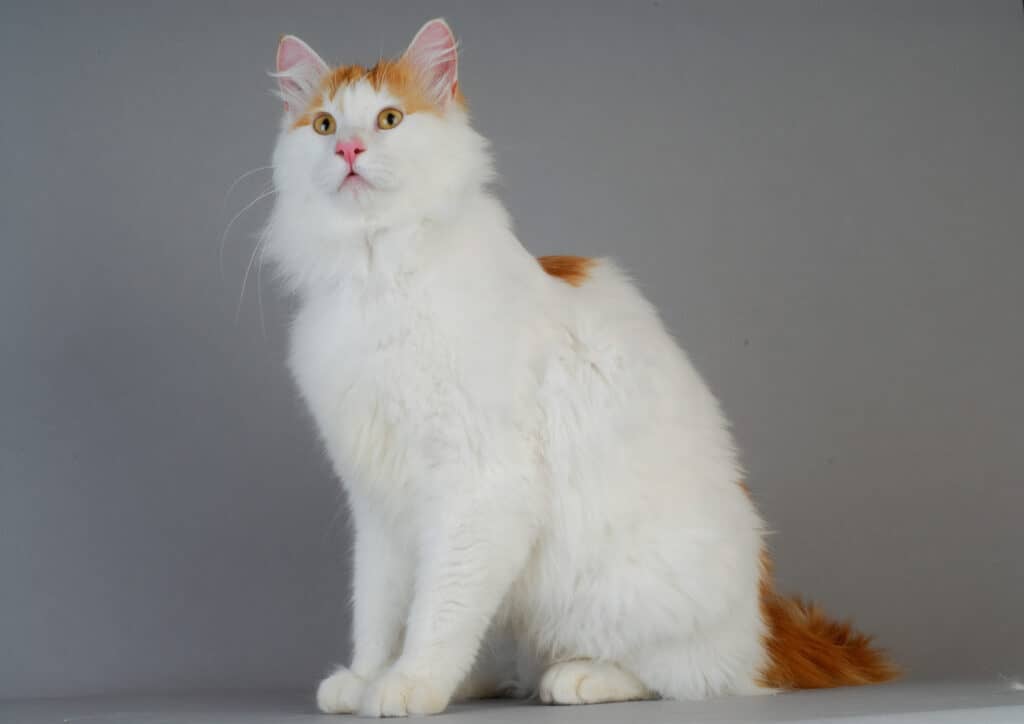
The Turkish Van originally came from the Lake Van region in Turkey, which is where its name comes from.
©iStock.com/Michel VIARD
Both of these cats have unique and interesting histories that add to their allure. Let’s start with the Turkish Angora. This cat is considered a breed of domestic cat. It has been documented to be around as early as the 17th century. They are considered an ancient breed of cat that originated in Anatolia, which is modern-day Turkey. Just like other domesticated cats, the Turkish Angora is a descendant of the African wildcat (Felis lybica). The ancestors of this cat were one of the first domesticated cats in the Fertile Crescent.
The Turkish Van, also known as a Van cat, is a type of domesticated cat that was developed in the United Kingdom. This cat was developed by selecting different types of domesticated cats in Turkey — specifically southeast Turkey. The cat’s ancestors were known to live in the Lake Van region, which is a part of Turkey that borders the Armenian highlands. Since their ancestors lived here, that is how they got the name Van cat. The cat was originally called the Turkish cat, however, it was renamed in order to distinguish it from the Turkish Angora.
Turkish Van vs. Turkish Angora: Appearance
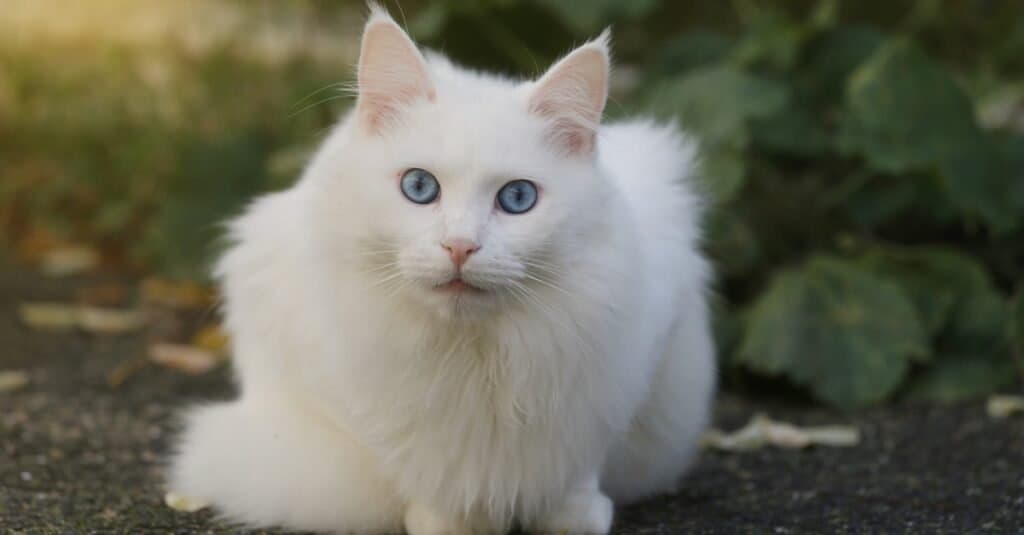
Original Turkish Angora cats are all white in color with distinct blue or green eyes.
©love pattern/Shutterstock.com
At first glance, you might immediately assume that these two cats look very alike. However, they both have important distinguishing features when it comes to their appearance. Let’s start with the Turkish Van’s appearance. This cat has a large body that is more muscular than it might appear. Although they are muscular cats, they still maintain an elegant appearance. Their coats are semi-long and incredibly soft.
In fact, some people have even compared this cat’s coat to the softness of cashmere. They are usually white in color along their bodies, however, their faces and tails can often be different colors. You’ll often see their face and tail colors in various shades such as red, brown, and cream. Finally, mature Turkish Van cats will have a brush tail along with lots of neck ruff.
The Turkish Angora, when compared to the Van, is much more elegant and smaller in appearance. Their bodies are medium in size and they are also quite muscular. They have a medium-length coat that is quite silky as well. They are the types of cats whose coats will blow in the wind. These cats are often considered more low maintenance thanks to their coat type. Original Turkish Angora cats are all white in color with distinct blue or green eyes. However, over the years, they have evolved to exhibit more colors in their coats such as tabby and tortoiseshell.
Turkish Van vs. Turkish Angora: Temperament
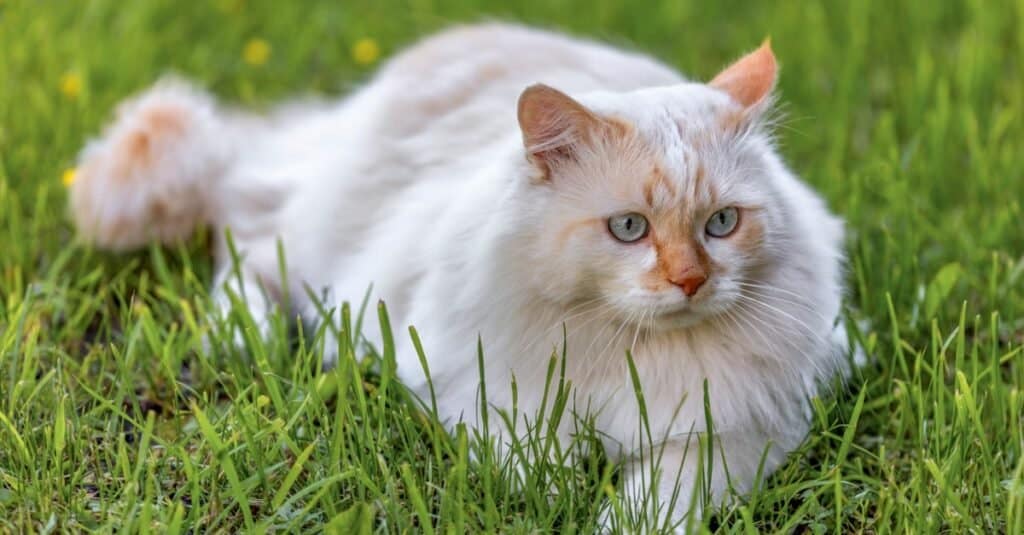
A Van cat needs a lot of playtime so that they can get all of their energy out during the day.
©Vadim Petrakov/Shutterstock.com
Turkish Angora cats are incredibly social and outgoing in personality. They are actually described as social butterflies. These cats love to be around humans and they will definitely grow a special bond with their owner. Compared to other cat breeds, the Angora prefers not to be left alone. This means that they do well in households with multiple pets as well. They’re also incredibly energetic cats as well. Sometimes when you leave them alone for too long they can get themselves into trouble. This is because they are intelligent cats and you can find them opening cabinets or even knocking things off tables.
The Turkish Van cat is also a very friendly and outgoing cat. Many cat owners who own a Turkish Van say that these cats are incredibly affectionate. Since they have sweet personalities, they often get along with children in the household as well as other pets. This is also a highly energetic breed of cat. They have strong hind legs, so you’ll often find them climbing and jumping onto high surfaces. A Van cat needs a lot of playtime so that they can get all of their energy out during the day. Overall, they are definitely a friendly cat that loves to play and find ways to entertain themselves.
Turkish Van vs. Turkish Angora: Maintenance
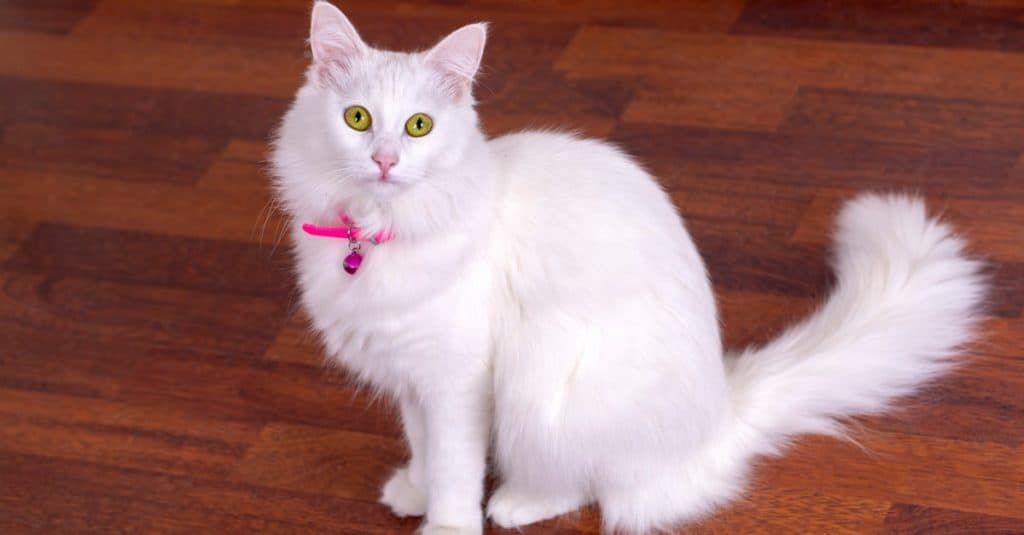
The Turkish Angora cat has a silkier coat making it easier to manage.
©Esin Deniz/Shutterstock.com
The Turkish Van cat will need regular maintenance, especially when it comes to their grooming. This is a more high-maintenance cat because of their coat. Owners will need to brush their coats at least once a day in order to prevent knots or tangles from happening. One of the most important things to keep in mind is the fact that their coat actually changes based on the seasons. During the summer, their coat is finer and it’s easier to brush through it. However, once the winter rolls around, their coat will become heavier and it’ll be more difficult to brush. It is often recommended that you begin brushing Turkish Van cats from a young age so that they get used to it and don’t fight it when they’re older.
The Turkish Angora cat has a silkier coat. This means that it will be easier, usually, to manage their coats. You will only have to brush their coat once or twice a week during most of the year. However, during the summer months, you may need to increase their brushing as they do molt. The best kind of brush to use on their coat is a fine-toothed one.
Common Health Problems of These Two Breeds
Both of these cats are predisposed to different health problems. The Turkish Van is less likely to suffer from health problems when compared to the Angora. They are a healthy breed that typically lives a long life. Although they are a healthy breed of cat, there are some problems that they can suffer from regardless. These problems include diabetes, ear infections, elevated liver enzymes, and respiratory issues.
The Turkish Angora is also usually a quite healthy breed of cat. However, the all-white Angora with blue eyes is more prone to deafness in their lifetime. Another common issue that an Angora cat will suffer from is hypertrophic cardiomyopathy. This is a heart disease where the heart muscle is enlarged. Finally, they can also suffer from ataxia. This is a neuromuscular disorder that can actually be fatal. It impacts young kittens at two to four weeks of age.
Which Cat Is the Right One for You?
After reading through all of this, you may be wondering which cat is best for you to own. Well, if you happen to be the kind of person who loves a cat that doesn’t shed a lot and loves to interact, then you’re going to want to go with the Turkish Angora. The Turkish Angora, overall, is a more low-maintenance cat when compared to Van cats because you don’t have to brush them daily.
The Turkish Van cat is the perfect option if you’re interested in a cat that is all about having fun. This breed has even been known to enjoy jumping into the water. If you’re an active person or have an active family, then a Turkish Van will fit in perfectly with your family.
The photo featured at the top of this post is ©
Thank you for reading! Have some feedback for us? Contact the AZ Animals editorial team.



